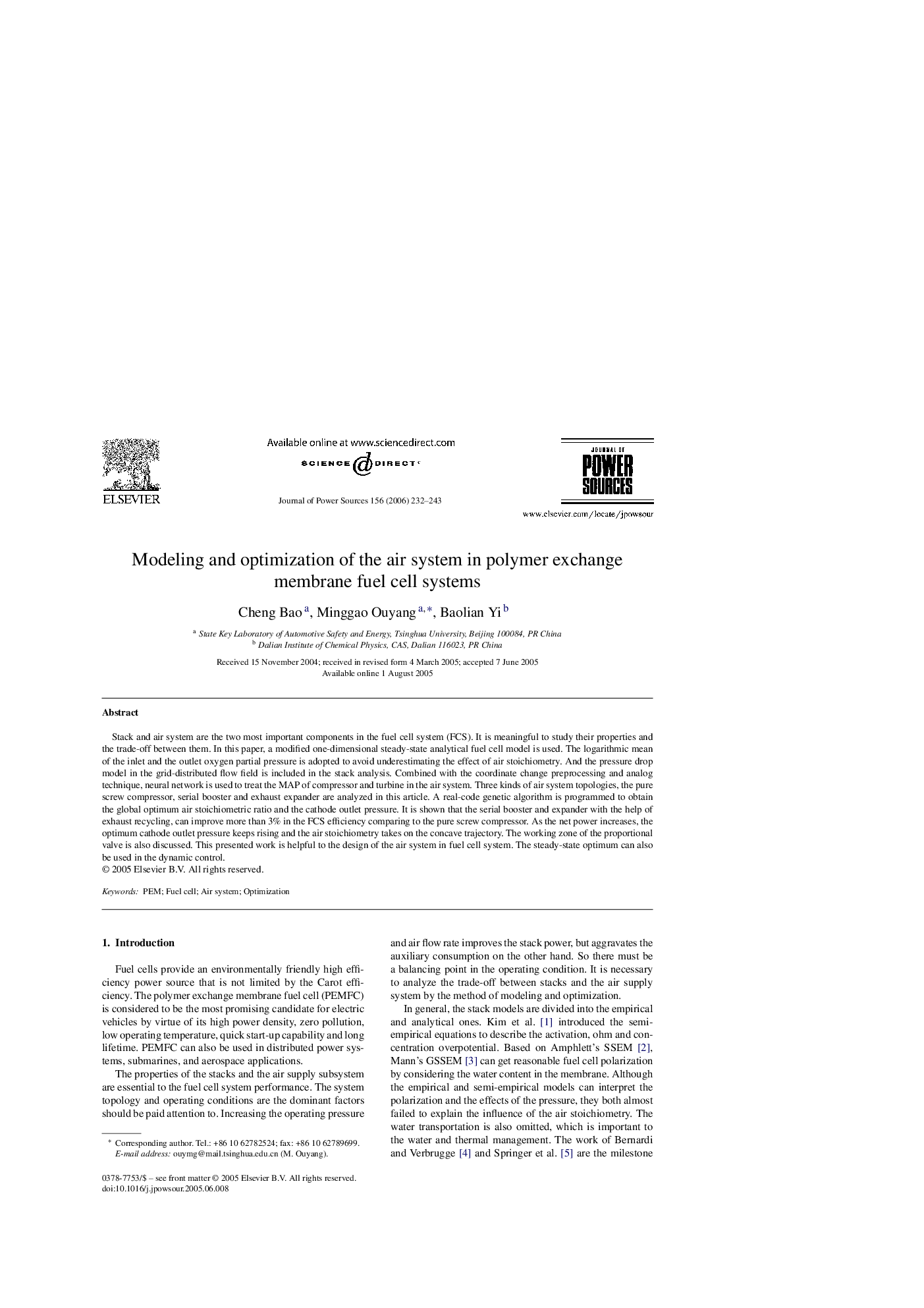| Article ID | Journal | Published Year | Pages | File Type |
|---|---|---|---|---|
| 1295023 | Journal of Power Sources | 2006 | 12 Pages |
Stack and air system are the two most important components in the fuel cell system (FCS). It is meaningful to study their properties and the trade-off between them. In this paper, a modified one-dimensional steady-state analytical fuel cell model is used. The logarithmic mean of the inlet and the outlet oxygen partial pressure is adopted to avoid underestimating the effect of air stoichiometry. And the pressure drop model in the grid-distributed flow field is included in the stack analysis. Combined with the coordinate change preprocessing and analog technique, neural network is used to treat the MAP of compressor and turbine in the air system. Three kinds of air system topologies, the pure screw compressor, serial booster and exhaust expander are analyzed in this article. A real-code genetic algorithm is programmed to obtain the global optimum air stoichiometric ratio and the cathode outlet pressure. It is shown that the serial booster and expander with the help of exhaust recycling, can improve more than 3% in the FCS efficiency comparing to the pure screw compressor. As the net power increases, the optimum cathode outlet pressure keeps rising and the air stoichiometry takes on the concave trajectory. The working zone of the proportional valve is also discussed. This presented work is helpful to the design of the air system in fuel cell system. The steady-state optimum can also be used in the dynamic control.
